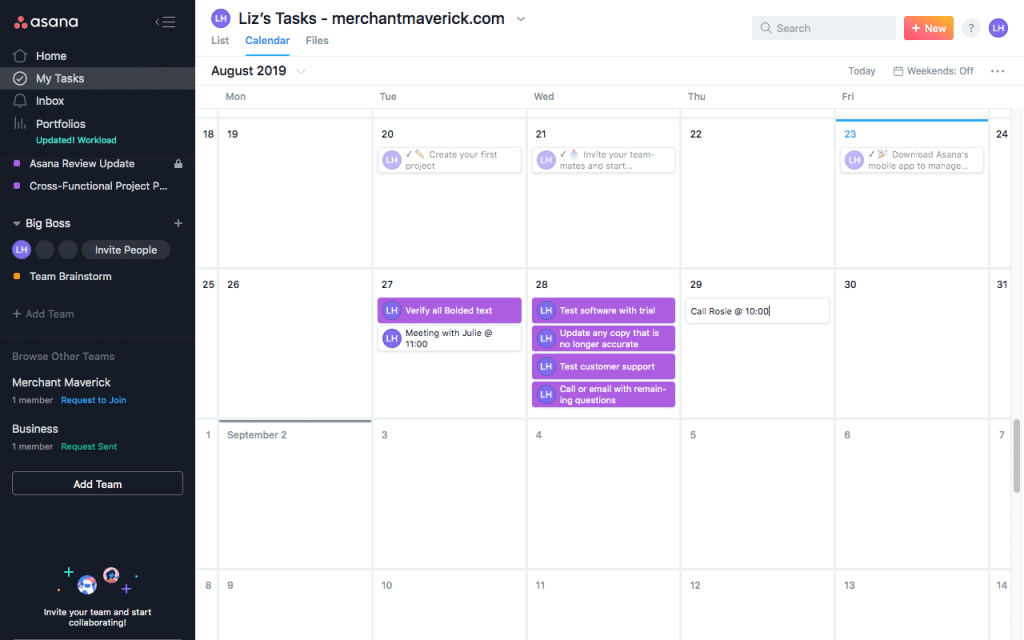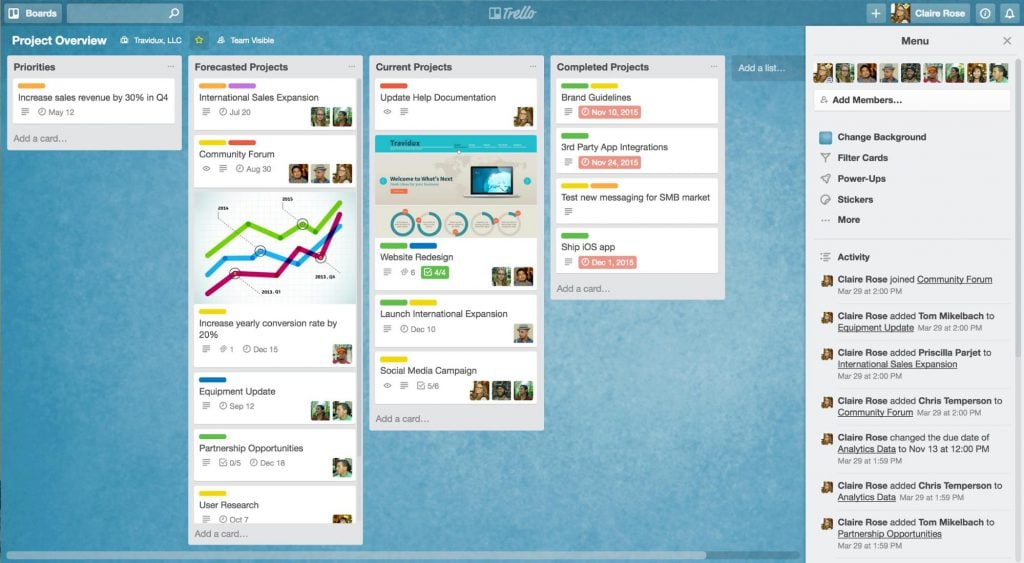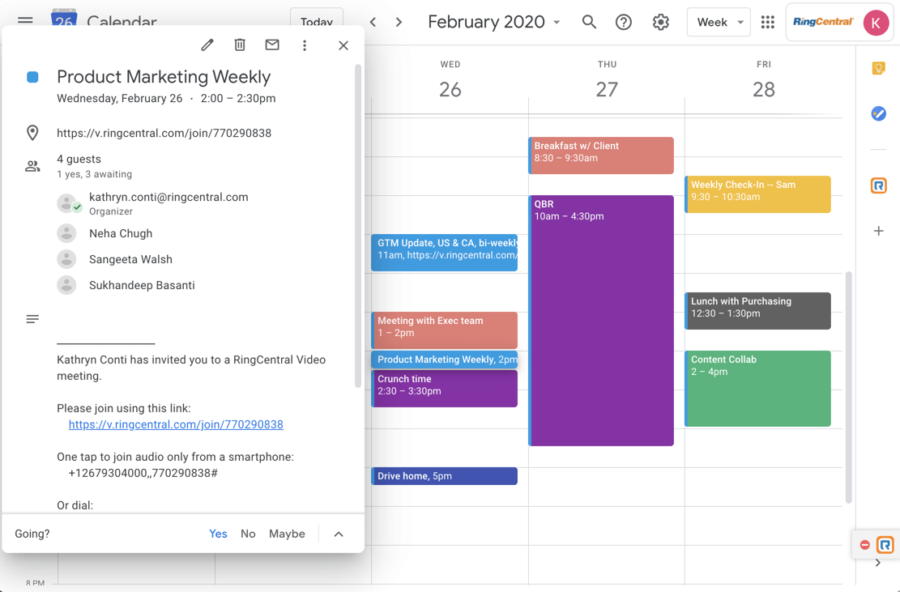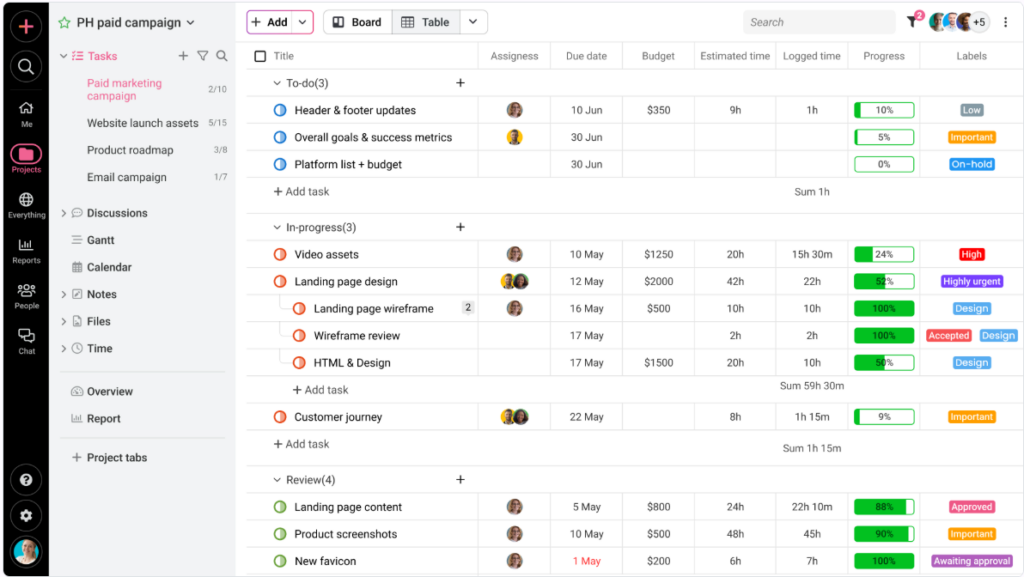Collaboration in the workplace was once confined to in-person brainstorming sessions and project coordination. However, how we work, especially how we collaborate, is evolving.
As companies become more interconnected and multifaceted, employee collaboration has become essential. According to research, the time managers and employees spend on collaborative activities has surged by over 50% in the past two decades, and in many organizations, communication with coworkers takes up 72% of the work week.
So how can employees successfully collaborate while overcoming typical organizational barriers that hinder effective collaboration in the workplace? What cloud collaboration tools should companies use to be successful? First, let’s define collaboration in the workplace and how it looks when done well.
In this post, we’ll explore…
- What is collaboration in the workplace?
- The importance of collaboration in the workplace ?
- Benefits of collaboration in the workplace
- Examples of workplace collaboration
- 8 principles of successful collaboration in the workplace
- How to improve collaboration in the workplace: 7 essential strategies and skills
- Tools that help with employee collaboration in the workplace
👀 How can you get your employees to collaborate better? It all begins with getting your new hires started on the right foot. Download our free remote onboarding checklist!
What is collaboration in the workplace?
Let’s start with a general collaboration definition. Collaboration means working with another person or a group of people to get something done. So, collaboration in the workplace is when two or more colleagues work together on a business task or project.
What does collaboration look like? It could involve anything from brainstorming ideas together on a whiteboard, to team members working separately on tasks that make up a complete project. Thanks to the many communication tools and cloud-based programs created for this purpose, collaboration can happen in person or virtually.
What does good collaborative working look like?
While there are many effective collaboration and communication strategies, the most successful work environments typically have some important features in common. These features are what make collaborative work, well, work.
Organizations with strong employee collaboration are places where employees feel seen, heard, and safe to share their thoughts. They run efficient meetings and work sessions.
They have standardized systems and collaboration processes in place. Their teams understand the importance of healthy communication. You might have worked at one (or a few, if you’re lucky!) before.Most importantly, executives and leadership understand that successful collaboration at work isn’t just good for their employees—it’s good for their customers and their bottom line, too.
Stay informed with RingCentral
Why is collaboration in the workplace important?
Collaboration in the workplace is crucial because it drives innovation and productivity. By combining diverse perspectives and skills, teams can generate creative solutions and tackle complex projects more efficiently. This collective approach leads to better problem-solving and enhanced performance.
Collaboration also promotes a sense of community and strengthens team relationships. Working together toward common goals builds trust and improves communication, creating a more cohesive and supportive work environment. This unity boosts employee satisfaction and retention, as individuals feel valued and connected to their colleagues.
Benefits of collaboration in the workplace
It might seem like a no-brainer to ensure your team members are working collaboratively with others in the workplace. After all, as the saying goes, “teamwork makes the dream work,” right?
The pros of effective communication and collaboration in the workplace far outweigh the cons. Still, it’s no easy feat to bring people together from different backgrounds and time zones (depending on the size and structure of your company), to work toward a common goal. Let’s examine the benefits of working in a team .
Improved efficiency
We’ve all heard of assembly lines. Though they sometimes get a bad rap, they’ve shown us one of the key advantages of teamwork—that many people working together can complete a project faster than one person working on their own.
With more pairs of eyes, you can spot mistakes more quickly, and find better solutions to problems by pooling your resources. You just have to make sure there’s clear communication so that tasks don’t get duplicated.
More innovation
Recently, more and more companies are assembling teams that bring people from across the organization together to brainstorm issues and generate new ideas that will benefit the business.
Groups tend to innovate faster, partly because team members with different backgrounds and experiences bring a wealth of different ideas to the table as well as learning from one another.
Stronger teams
What do some of the best workplaces in the world have in common? They put effort into connecting their employees to form stronger teams and social networks.
Not only does working toward the same goal instill team members with a strong sense of purpose, but collaborating with others also enables team members to fill in each other’s skills gaps and divide up the work to play to everyone’s strengths.
When colleagues understand each other better, they can build strong relationships—which further enhances employee collaboration.
Employee development
Collaboration with colleagues leads to more knowledgeable and skilled employees. Through teamwork, they get the opportunity to learn new things from each other, which contributes to their overall personal and professional development.
A collaborative approach also challenges people to think, articulate, and learn more about their competencies, which can help them build self-awareness and a better understanding of their strengths and weaknesses.
Happier employees
Effective collaboration means employees who get on well with their teammates, enjoy a positive company culture, and are given opportunities to develop their skills.
These workers are much more likely to be happy in their work, especially when they are praised and rewarded for a great team effort. They’re the staff who will stay with your company, improving your turnover rate.
A better customer experience
Among the key collaboration benefits is the positive impact on customer experiences.
Thanks to the increased efficiency we mentioned earlier, strong teams can collaborate to resolve issues faster—as well as coming up with new ways to delight customers. Happy employees make for happy customers, all of which helps you maintain a high customer retention rate).
Examples of workplace collaboration
Let’s look at some real-world collaboration examples in the workplace that show why teamwork is essential.
Protiviti: Collaboration for innovation
Consulting firm Protiviti hosts a Global Innovation Challenge where each of its local offices conducts a working session to answer a question from the leadership team.
The ideas generated are then logged into the company’s internal idea-sharing platform and reviewed by the company’s Innovation Task Force. Initiatives like this help companies leverage the diverse perspectives of their talent.

Workday: Collaboration for team bonding
Also showing the importance of teamwork, HR tech company Workday developed a New Connections program for new hires to help them establish strong bonds with their colleagues.
Through the program, employees spend half the day learning about the value of connections and the second half working on a community project to deepen their connections both inside and outside of the organization.
RingCentral: Collaboration for problem-solving
RingCentral is a collaboration platform that lets office-based teams communicate easily with contact center agents—not just for working on internal projects but also for ad hoc collaboration to solve customer problems as they happen in real-time. Within this ecosystem, RingVideo enhances these capabilities by offering a comprehensive suite of video collaboration tools:
- Meetings for quick problem-solving sessions
- Rooms for transforming physical spaces into video-enabled conference areas
- Town Halls for company-wide updates and collaboration
- Webinars for customer education and support
- Events for large-scale virtual gatherings
This empowers contact centers to resolve problems faster than previously possible, which makes for happy customers and gets you rave customer reviews. It’s a classic example of collaboration at work having knock-on benefits for the whole company. By leveraging RingVideo’s AI-powered features like live transcriptions and instant meeting summaries, teams can ensure that no crucial information is lost during these collaborative sessions, further enhancing their problem-solving capabilities.
8 Principles of successful collaboration in the workplace
Collaboration styles vary wildly, but there are a few core principles to keep in mind when improving collaboration in the workplace:
1. Efficiency
Meetings are an essential element of collaboration, but over the years, they’re not always as effective as you’d think. After all, who hasn’t been in a meeting that felt overly long or unnecessary? There are a few things you can do to turn your team into a productivity machine.
One is only to have meetings when necessary. Virtual collaboration is great, but everyone has heard of video burnout. Having back-to-back meetings can be exhausting and frustrating, especially when teammates have pressing deadlines. By setting only those meetings that are actually necessary, you can ensure you’re making the best use of your team’s valuable time.
Want to have more efficient meetings? Use these free meeting agenda templates to keep everyone on track. 👇
Another way is to make sure that any meeting or call has an agenda and clear goals outlined for each participant.
Lastly, don’t forget to set action items for everyone involved in the project at the end. If you have a project requiring more teamwork from the attendees in a meeting, why not create a project-focused team chat for everyone?
For example, RingCentral’s video conferencing app lets you do exactly that. Not only can you have virtual meetings, but you can also create a group conversation for follow-ups after the meeting—in the same app- as well as take collaborative notes to be shared after the call:
2. Trust
People need to feel safe giving and receiving genuinely constructive feedback, be inspired by a common goal, and have the tools and opportunities to connect.
This can only happen in a trusting environment where employees feel like their teammates and leaders have their best interests at heart. Trust is a vital ingredient for good communication and collaboration in the workplace.
3. Empathy
Every team member has an important part to play. Nevertheless, collaboration can break down when one or more people feel like they have it harder than everyone else or feel like other team members are trying to bring them down. The more you get to know your colleagues and understand how they work and what challenges they’re dealing with, the better chance you’ll have at successfully collaborating with them.
4. Positivity
A positive attitude goes a long way when you’re collaborating in teams. For example, just because you had a group project go poorly in the past doesn’t mean the same thing will happen again. Try to shake off past hang-ups and approach every group work situation like a new start, with an open and positive mindset. Keeping the teamwork benefits in mind is a good start.
5. Clarity
It’s rare for everyone on a team to be on the same page from the very beginning. Every stakeholder from every team will have their own priorities or interests. That’s why it’s important to identify everybody’s priorities and agendas to find a common denominator to move the project forward. Clear instructions are a must.
6. Accountability
The most successful businesses have systems and processes where employees can reference a project’s schedule and tasks, so they have a clear understanding of how their contributions affect the group. If deadlines are missed or someone isn’t pulling their weight, it can be addressed quickly.
7. Inclusivity
To be a collaborative environment, a workplace must also be an inclusive environment. Diverse teams that can draw ideas and insights from staff of varied backgrounds and skill sets are more creative and excel in problem-solving and decision-making.
Whereas, environments with barriers to inclusivity also block knowledge sharing and cross-functional collaboration. Not to mention also, obviously, falling down in terms of employee engagement and the general employee experience.
8. Digital inclusivity
In the age of hybrid work and remote teams, you must also consider digital inclusivity when seeking to foster collaboration among employees. What we mean by this is that no one at your organization should be blocked from effective collaboration simply because they aren’t (or are) in the office.
Remote work and on-premise work within your business should meld seamlessly into one productive, collaborative whole. That means establishing communication channels and workflows that make it simple for colleagues to share ideas and work together—no matter where they are.
How to improve collaboration in the workplace: 7 essential strategies and skills
If you’ve ever worked on a group project that didn’t go as well as you thought it would, then you know that promoting collaboration in the workplace is often easier said than done. Perhaps your teammates work remotely and are hard to reach. Or maybe your organization is too siloed, and departments don’t want to share information.
So, how do you collaborate successfully? Trust us—mastering these five collaborative strategies will make working in a team much easier and more effective.
1. Develop a company culture
If you’re going to create a truly collaborative culture in your workplace, it has to start at the top. Company leaders should set an example by practicing collaboration strategies in their own work, and encourage the whole organization to do likewise.
This means providing every opportunity for teamwork to thrive, including training and mentoring and the right tools to help colleagues collaborate from anywhere. It also involves ensuring you choose the right people with the right skills for each team.
When you’re recruiting, check that your prospective candidates have attributes and attitudes that will help them work well in teams. While certain skills are in-built, others can be learned and developed. We’ll touch on some of these shortly.
2. Embrace differences
Not all team members have the same collaboration style. You’ll need to adapt to people’s varying needs and preferences, rather than sticking to one rigid process—and of course, ensure that everyone is treated fairly and equally. It’s also a good idea to create diverse teams with members who complement one another.
For instance, combine team members who have lived in multiple countries and speak multiple languages, and locals with deep roots in the area they’re working in. The former bring expertise that can be applied to many situations, while the latter bring in-depth knowledge and insight into an area’s politics, culture, and tastes.
3. Set clear goals
When working with a team, everybody must understand the purpose and vision behind the project and how success will be determined. Establishing transparency from the get-go builds trust and ensures everyone is committed to success and aligned with a common purpose.
Rather than taking a top-down approach to goal-setting, it’s more collaborative if everyone is involved in outlining the objectives. Encourage input from team members at all levels—for example, individual teams could set their own relevant KPIs.
4. Keep the lines of communication open
In collaborative teams, each member knows what the others are doing, so there’s no duplication of tasks and everyone has realistic expectations for when the project will be completed.
Remember to update your colleagues if you need to make any changes to the plan that you’ve set out. If something unexpected happens and you won’t be able to deliver results as expected, communicate these changes.
Again, this is where having an all-in-one communications tools comes in handy—if your team can video call and instant-message each other from the same app, there’s a higher chance that they’ll communicate quickly with each other when something comes up:
5. Practice active listening
When you’re working closely with others, you have to listen closely to each team member’s ideas, feedback, and advice—and be considerate and respectful when responding. That’s the idea behind active listening.
While you may have ideas about how you would like the project to go or who should do what, you still need to consider your colleagues’ opinions. You might not always agree with the outcome, but ultimately, you need to prioritize the group’s needs and responsibilities over your own wants.
6. Solve problems together
Sometimes, issues arise, and people make mistakes. It happens. Calmly analyze the issue as a group without blaming any one person. Instead, focus your energy on working together to find solutions.
This helps build trust between team members and ensures everyone feels comfortable communicating and being transparent with each other, even if they do something wrong.
7. Manage your time
One of the benefits of teamwork is that you can share the workload. However, collaborating with others means you need to be accountable to not only yourself but also your group members who are dependent on you.
This is where time management skills come in. Being able to prioritize your tasks and schedule them accordingly is key to ensuring you can meet deadlines and complete the work that your team is counting on you to deliver.
Tools that help with team collaboration in the workplace
Teams can’t collaborate if they can’t communicate. The good news is there are many digital tools that make it easier to collaborate with team members virtually—beyond just email. Because, as we know, email isn’t always the best way to get in touch with someone.
Here are some of the best collaboration tools you and your team should have on your radar:
RingCentral
RingCentral’s desktop and mobile app is an all-in-one communication tool that makes employee teamwork and collaboration in the workplace seamless through every channel.
It includes video calling, messaging, file sharing, and task management features and can even integrate with apps like Google Drive and Google Calendar:
You can use it to start conversations with clients and teammates across multiple touchpoints and answer their questions faster by working together in real-time across departments over a call, message, or video conference—all in the same app.
🕹️ Get a hands-on look at how RingCentral works by booking a product tour:
💰 You can also use this calculator to see roughly how much your business could save by using RingCentral to support your team’s communication with each other—and clients.
Asana

One of the most popular project management tools on the market, Asana allows you to assign tasks to other teammates, add followers to projects, and monitor deadlines.
At its most basic, Asana functions as a robust to-do list or project calendar. Still, its premium version has useful features like Forms to gather information and Timeline to track start dates and dependencies.
Trello

Like Asana, Trello is a project management tool. Its user-friendly interface organizes projects and tasks into cards that can be dragged and dropped into different columns. It’s quick to set up and works well for monitoring projects, assigning tasks, and quickly seeing the status of your team’s projects at a glance.
Google Workspace

Google’s suite of collaboration tools is tough to beat. From Drive to Sheets to Calendar, Google Workspace’s tools are designed to allow teams to work together, from anywhere.
ProofHub
ProofHub is an all-in-one project and team collaboration tool that helps streamline collaboration by eliminating scattered conversations and siloed workflows. It brings everything teams need to plan, collaborate, and stay aligned in one place.
You can assign tasks, discuss ideas, share files, leave contextual feedback, proof documents, and have real-time conversations with built-in chat – all without switching between multiple apps.
Improve teamwork and collaboration in the workplace with RingCentral
Effective collaboration in the workplace goes beyond having video calls and clear meeting agendas.
The best workplaces implement various practices and programs to foster collaboration, from having weekly standups to keep everyone in the loop on a project, to using the right tools to let employees communicate with each other on whichever channels they prefer.
Looking for a platform to increase collaboration in your workplace and help employees be more productive? Check out a demo of RingCentral AI-powered communications solutions now!
FAQs about collaboration in the workplace
How do you encourage collaboration in the workplace?
Encouraging workplace collaboration involves encouraging an inclusive culture and providing opportunities for teamwork. Leaders should promote communication, offer collaborative skills training, and recognize team efforts.
We recommend investing in digital collaboration tools like video conferencing and project management software to facilitate seamless communication and resource sharing across teams, regardless of location. Regular feedback ensures these tools meet the team’s needs and promotes continuous improvement in collaboration practices.
What are the challenges to collaboration in the workplace?
Challenges to workplace collaboration include communication barriers and differing work styles. Poor communication can lead to misunderstandings, while variations in work preferences can create friction and hinder idea flow.
Organizational silos also pose a significant challenge, as isolated teams lack coordination and information sharing, leading to duplicated efforts and missed synergies. Additionally, the absence of effective collaboration tools can make it difficult for employees to connect and work together efficiently. Overcoming these challenges means fostering open communication, aligning work processes, and implementing collaboration tools.
How do you encourage employee collaboration?
Collaboration in the workplace shouldn’t just be a top-down process. You also need to encourage employee collaboration, where colleagues share knowledge and work together without managerial input.
There are many ways to get this ball rolling. They could include considering team-building exercises to get colleagues more comfortable working together. Or, you might seek to train your staff in soft skills like active listening or empathetic communication.
Updated Nov 13, 2025














